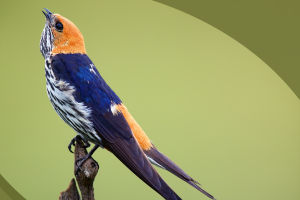Hippocampus is classified as fish because its basic life characteristics are similar to those of fish.
The seahorse is named because its habits are similar to those of fish, both use their gills to breathe, and its head resembles a horse's head.
Because the external form is similar, the size of the seahorse is also different.
Most hippocampus lives offshore, in low tide areas where the water is relatively clear and there is a lot of algae.
Most hippocampus is active during the day and makes a strong stop at night.
When attacked by natural predators, they will send out distress signals through pharyngeal muscle contraction.
As a typical saltwater fish, the seahorse grows very fast and has a high reproductive capacity.
Hippocampus are slow swimmers, the slowest swimming marine creatures in the world.
Their defenses are relatively poor, so this makes them a target for predators to capture.
Not only will sharks, cod, etc. capture, but even sea urchins, crabs, shells, and other invertebrates will also bully the seahorse from time to time.
But it is also the only upright swimming creature in the sea and looks like a graceful dancer.
In order to protect itself, the hippocampus will choose to hide when they encounter natural enemies, or else play dead, in order to protect themselves.
Most of the hippocampus are very weak, will be their tails and seaweed tangled together, waiting for some small creatures that swim by, these will be the food of the hippocampus.
Although the seahorse attack is very small, the seahorse has the ability to self-protection.
Because the seahorse body can change color, turning itself and the surrounding seaweed into color, so as to protect themselves.
Many hippocampus also grows fleshy spines like algae.
They can use to simulate the surrounding environment to hide their bodies to avoid natural enemies on the sea floor.
The seahorse is not a fast swimmer, even the sea turtle can not compare, and can only cling to the seaweed, using the tail to keep itself fixed.
But it does not lose in predation on other large creatures, it preys on something that all marine fish love, and that is copepods.
This kind of thing appears to be very sensitive in the perennial evolution, the slightest fluctuation of water ripples will be alert, and the enemy will quickly escape once they approach.
However, the seahorse has an arched neck and can twist its neck to capture the target object.
Although the capture length is 0.1cm, it can approach the target silently and then capture it because it is very slow.
Its capture success rate is up to 90%.
Its mouth is under the long muzzle, which allows it to avoid water ripples at the muzzle and swallow food quickly.
The hippocampus's eyes can turn independently and freely, which allows them to hunt with a higher success rate, not letting go of any prey that comes close.
In fact, the hippocampus is a carnivore, its appetite is also very prosperous, and the digestive system is very well developed.
After swallowing the food will quickly enter the digestive system.
So don't look at the seahorse move slowly, and is not big, but is a natural hunter.


